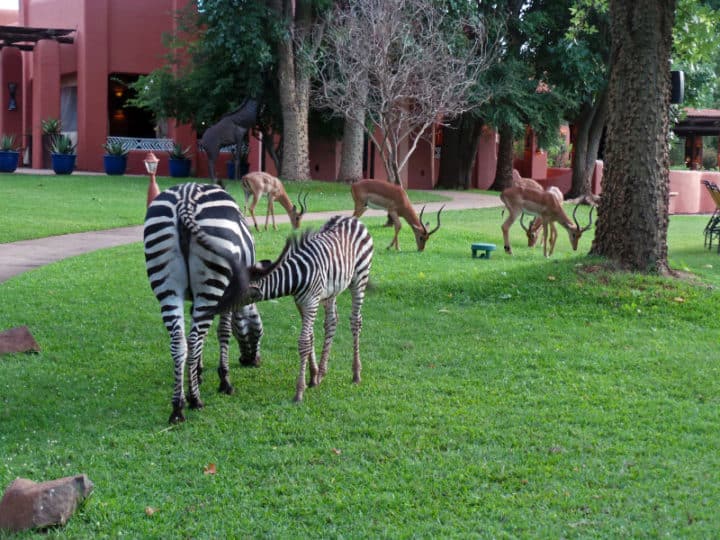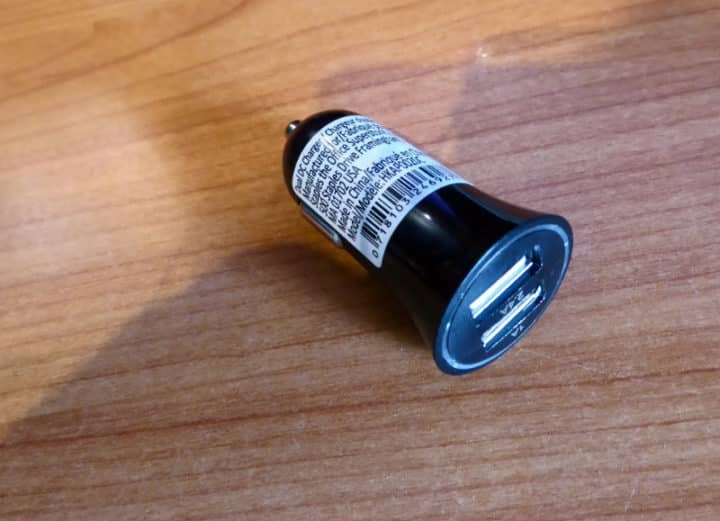
I recently returned from a mobile tent safari in Botswana with Letaka Safaris. Botswana isn’t as popular (yet) as Kenya or Tanzania among safari-seekers, but its offering of wildlife and good safari operations makes it worth a long look.
If you’re going or thinking of going on safari in Botswana, here are 14 things to know:

1. You should consider stopping at Victoria Falls
If you’re going to Botswana, I recommend entering the country by way of Victoria Falls in Zambia/Zimbabwe, particularly if you haven’t been before. The falls—site of the greatest curtain of falling water in the world—are magnificent and really shouldn’t be missed if you’ve already traveled this far. They’re only about a two-hour flight from Johannesburg (JNB), one of the major international arrival points in the region.
2. You should build in a couple of days for stopovers (and your airline may offer them)
Africa is a long trip from North America (it was 24 hours of flying time from Vancouver to Victoria Falls). Some airlines, like KLM, have built-in layovers if you fly them exclusively to your destination. I spent one night in Amsterdam (AMS) and one night in an airport hotel in Johannesburg before arriving in Victoria Falls, which left me rested and ready to begin my vacation. I didn’t do that on my return trip and regretted it for days. It took 42 hours from the time I got up until I got home!
3. Paying for airport lounge access may be worthwhile
If you have a layover of more than four hours, consider using an airport lounge. You don’t have to be an elite flyer to use many lounges. You can book four hours in a lounge for about $35. The Aspire Lounge at AMS that I booked time in had meals (not just snacks), a full bar, comfortable chairs, and showers all included in the price.
Tip: Many credit cards offer complimentary or discounted lounge access. Here’s our credit card page.

4. You can ask for a multiple-entry visa at Victoria Falls
Victoria Falls are shared by two countries—Zambia and Zimbabwe—sort of like Niagara Falls is shared by Canada and the U.S. If you visit, you’ll definitely be traveling back and forth between the two countries many times. The cost for a single-entry visa is about $30 (depending on whether you’re getting a Zambia visa or a Zimbabwe visa), so the money can add up fast. A not-so-well-known fact is that you can buy a visa (UniViza) that’s good for multiple entries for only $50. The secret is that you have to ask for it. It won’t be offered to you automatically.
5. A hotel in Victoria Falls National Park can save you money
If you’re going to be at the falls for a couple of days you might want to consider staying at a hotel inside the park. Yes, it’s more expensive, but each time you enter the park (even on the same day) they’re going to charge you another $30. If you’re staying in the park, you just show them your room key each time you go in, and there’s no charge.

6. You should leave extra time for transit across borders
If you’re arranging a land transfer to your safari starting point—say from Victoria Falls, as I did—you should insist that you get picked up early. I was told it would be about a 90-minute trip from Vic Falls to our meeting point in Botswana, which included being handed off between guides three times! In my experience, a guide from one country isn’t allowed to cross the border into another country, so when you’re being transported between countries your guide will leave you at the border to walk across on your own to meet your next guide. If one of them (or more) is late, you’re sort of hooped—especially if your tour is departing at a certain time. Despite assurances that we had lots of time, I arrived ten minutes late. Luckily they waited for me.

7. You should always carry a flashlight
Power can be spotty in Botswana, and you could wake up in the middle of the night with no lights. You should also carry a spare set of batteries (in case you accidentally leave your flashlight on). For the camping safari, I had a headlight flashlight. It was great, especially for walking around at night when I needed my hands (as when going to the bathroom or fighting off lions). It’s also great for reading in bed.

8. The outlets require adapters
You’re going to have a fair amount of electronics that need recharging: cameras, tablets, phones, E-readers, and flashlights, to name just a few. Remember you’re in a foreign country and your U.S. devices aren’t going to fit local plugs. You need to bring several plug converters: Botswana and South Africa take D or M plugs, Zimbabwe requires D or G plugs, and Zambia uses a C which is the standard European plug. In lodges you won’t have a problem finding power, but mobile camps generally don’t have power; you must recharge your electronics from a power station built into your vehicle. There are lots of outlets available, as long as you have the proper adapter for it. It’s worth checking before you go to find out what adapters you need.
9. You should consider packing binoculars
I like the compact ones I can carry on my belt. You’ll find they’ll come in handy for looking at small animals and birds.

10. A cheap charger can go a long way
I also took one of those cheap lighter chargers that has two USB ports built in. I was the only one in my group that had one, so I had unlimited use of power from this source. Because it was connected directly to the 12V system and not running through the inverter, I found that my batteries charged quicker. You can pick these up almost anywhere. I got mine at the dollar store.
11. You should pack for rain and shine…
Most of vehicles are of open architecture—just a canvas roof. When it rains, you’re going to get wet. Our safari provided good ponchos, but you shouldn’t depend on those. I carried at least two disposable ponchos in my pack. I also packed a pair of “rain pants,” which came in handy on more than one occasion.

12. …and hot and cold
Expect a big range of temperatures, even in one day. We began the mornings wearing fleeces and light jackets, and by ten in the morning we were in short-sleeves. By one in the afternoon we were baking. While I find convertible pants somewhat “dorky” I find that they really come in handy when you’re in a vehicle all day and don’t have the chance to go back to your lodgings to change into shorts.
13. Sunblock is a must
Definitely bring sunblock. I know many people may say they “don’t burn.” I’m one of those people, but in Botswana, I did. It’s the side of your body (your arm and the side of your face) that’s facing out of the open vehicle when you’re out in the bush. Another suggestion, in addition to wearing sunblock: Swap with your seatmate on the other side of the vehicle every other day.
14. You’ll need a good pair of shoes
You don’t necessarily need hiking boots—unless you’re going trekking in the mountains, but you will be going on short hikes and it will be muddy and slippery. If you’re wearing sandals or flip-flops, you’ll regret it.








i would love to visit here after reading this blog. thanks
I hope to visit Africa soon!